This portfolio is ever-evolving—just like my creative journey. With every project I take on, I learn something new, refine my skills, and uncover more of what drives me as a designer and visual storyteller. What you see here is just a snapshot in time, and there’s always more in the works. New work is added regularly, and I’m constantly pushing myself to explore fresh ideas, sharpen my voice, and take on challenges that stretch both my creativity and strategy. So if something resonates with you, stay tuned—there’s always more to come.
Phase 1: The Spark
Some of my earliest memories involve a crayon in hand and paper spread across the floor. Drawing became my way of seeing the world, and sharing it. Even at two or three years old, I felt an unexplainable pull toward color, shape, and the magic of making something from nothing. Art wasn’t just a hobby, it was my first language. My dad, a talented artist himself, was my first inspiration. Watching him work made art feel magical and possible. He encouraged me from the very beginning. Whether I was scribbling on printer paper or experimenting with watercolor. Through him, I learned that creativity had power. It was something to nurture, to chase, to grow into. Those early years laid the foundation for everything that would follow, even when I didn’t realize it at the time.
(Ages 2–12 | Discovery & Early Passion)
Phase 2: The Drift
(Teen Years | A Quiet Chapter)
During my teen years, art quietly slipped to the background. Life got busy, priorities shifted, and the creative spark I’d carried so naturally as a kid felt a little dimmer. I still appreciated art. I admired it, I was drawn to it, but I wasn’t actively creating. Looking back now, I see that as a period of rest, not loss. Sometimes we step away from what we love only to rediscover it later with clearer eyes and deeper appreciation. That rediscovery would come and when it did, it came back stronger than ever.
Phase 3: An Unexpected Opportunity
It started with a catalog. A wellness and sustainability company I worked with needed a product catalog, and they asked if I could help. I said yes and ended up designing an entire 28 page catalog. Everything from taking and editing product photos and page layout, to creating an “about us” and product information pages. That project flipped a switch in me. Suddenly, I saw the creative world in a whole new light: organized layout, purposeful typography, communication through visuals. Graphic design had found me.
After that project, I knew I wanted more. I talked to my boss and told him plainly I wanted to be more involved in the creative side, whether that was with the company or somewhere else. He was supportive, but explained there weren’t any open roles for that kind of work internally. So I made the decision that changed everything.
I applied to art school, quit my comfortable “big girl job,” and became a bartender to work my way through the Graphic Design program. What a dive, right? But it was the best risk I ever took. That leap was the moment I stopped waiting for the creative life I wanted and started building it myself.
(Early 20s | First Graphic Design Project)
Phase 4: Going All In
(2023 Onward | Graphic Design School Journey)
When I enrolled in the Graphic Design program at Alamance Community College, I thought I was just going to learn software. What I got was so much more.
The program was immersive and hands-on, covering everything from mural painting and fine art to typography, page layout, packaging, branding, animation, photography, and even videography. Each semester expanded my understanding of what graphic design could be and what I could be within it.
What really shaped me were the instructors. I had a diverse group of teachers who challenged me, inspired me, and brought completely different perspectives to the table. That mix gave me the tools to not only build technical skills, but also to think like a designer. Critically, creatively, and with intention. By the time I finished the program, I didn’t just feel prepared for the industry. I felt excited for it.
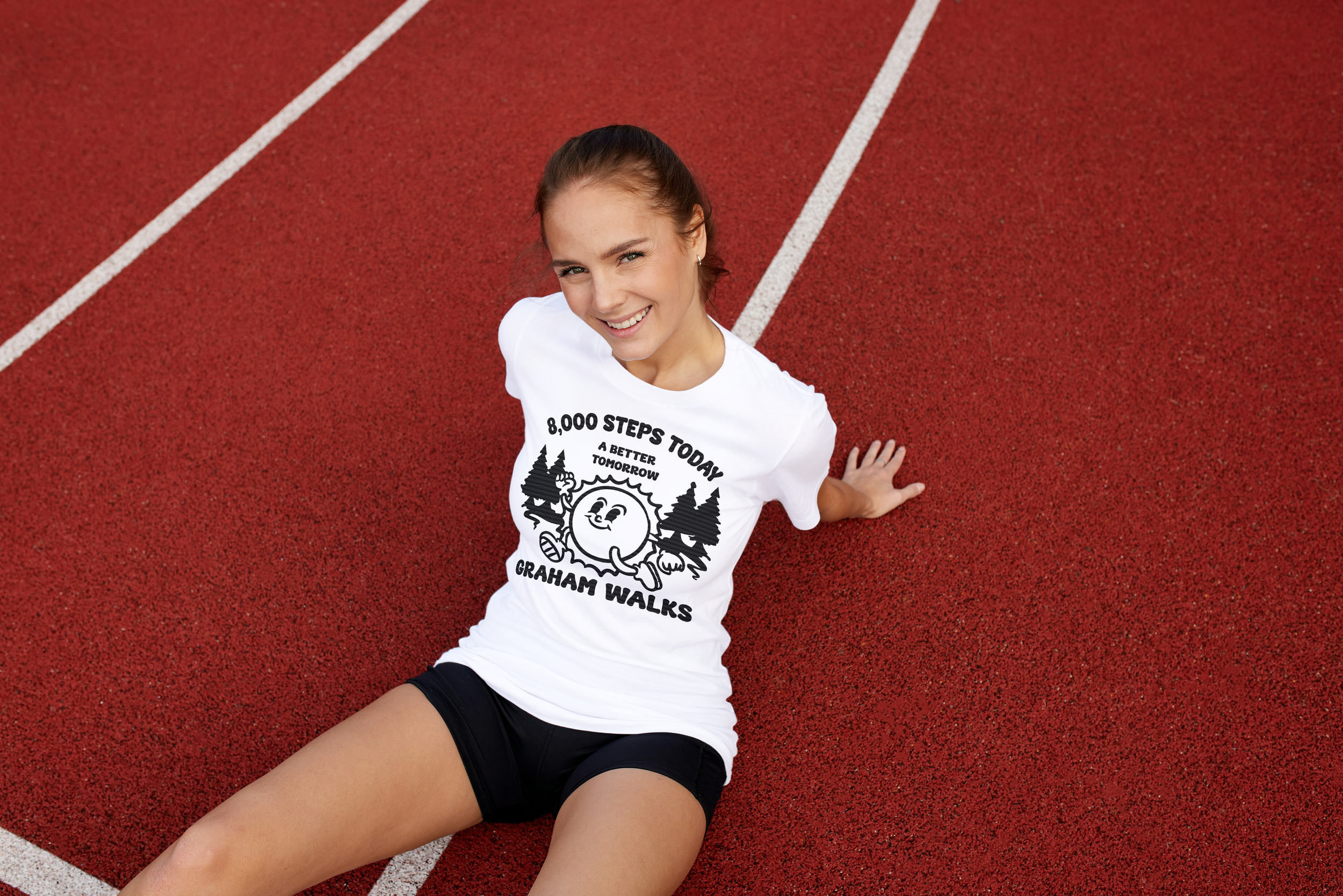
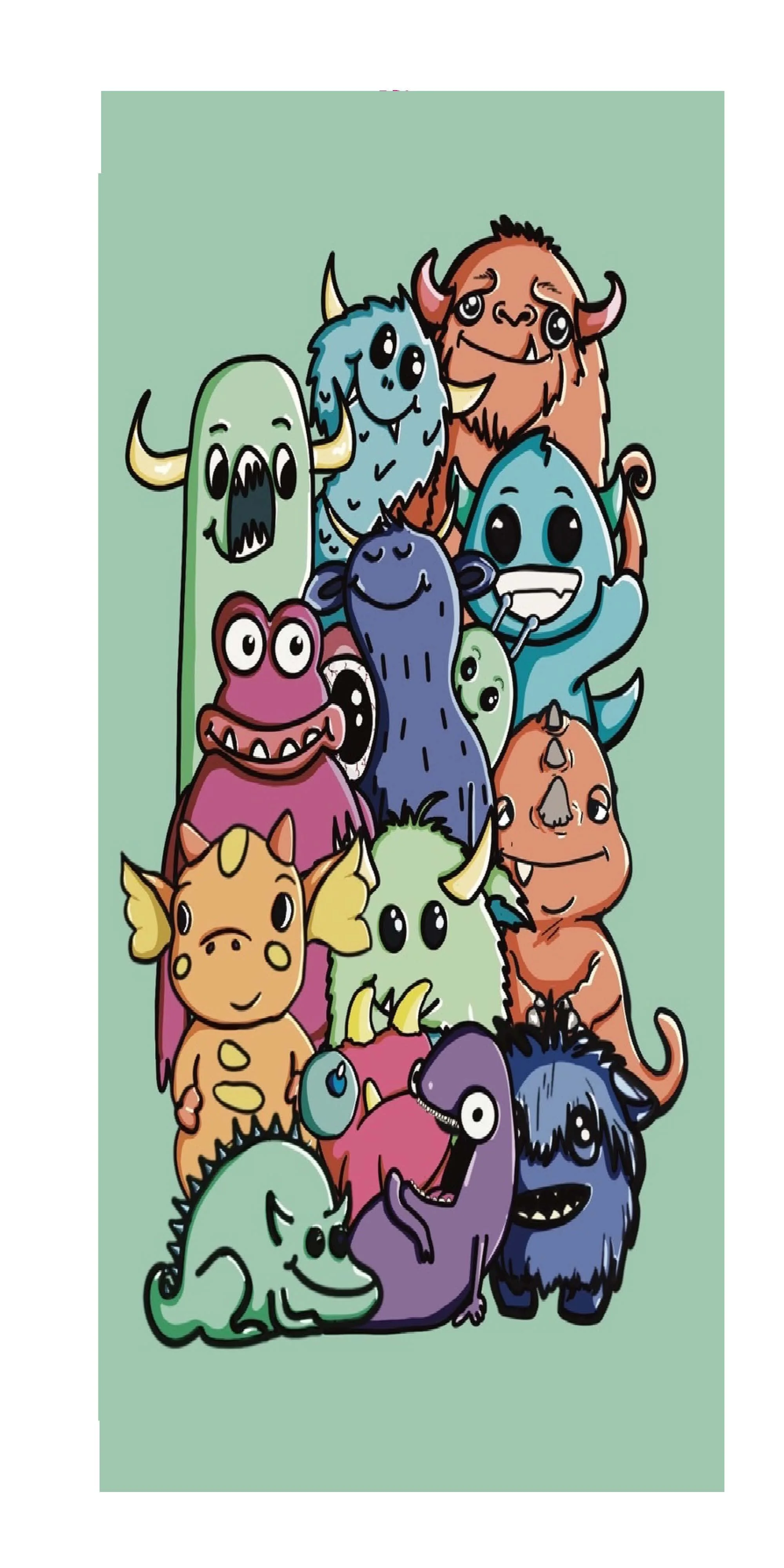
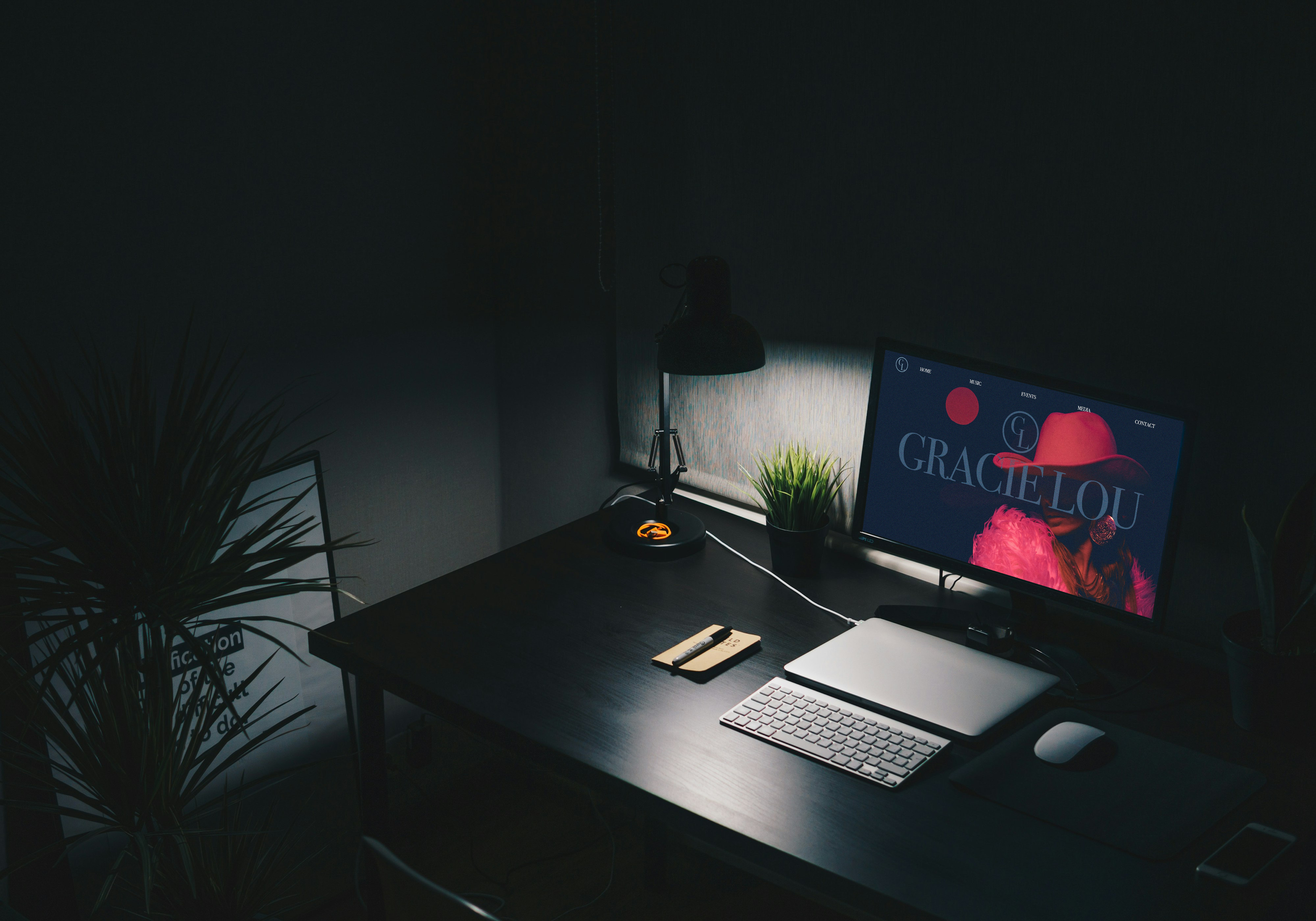


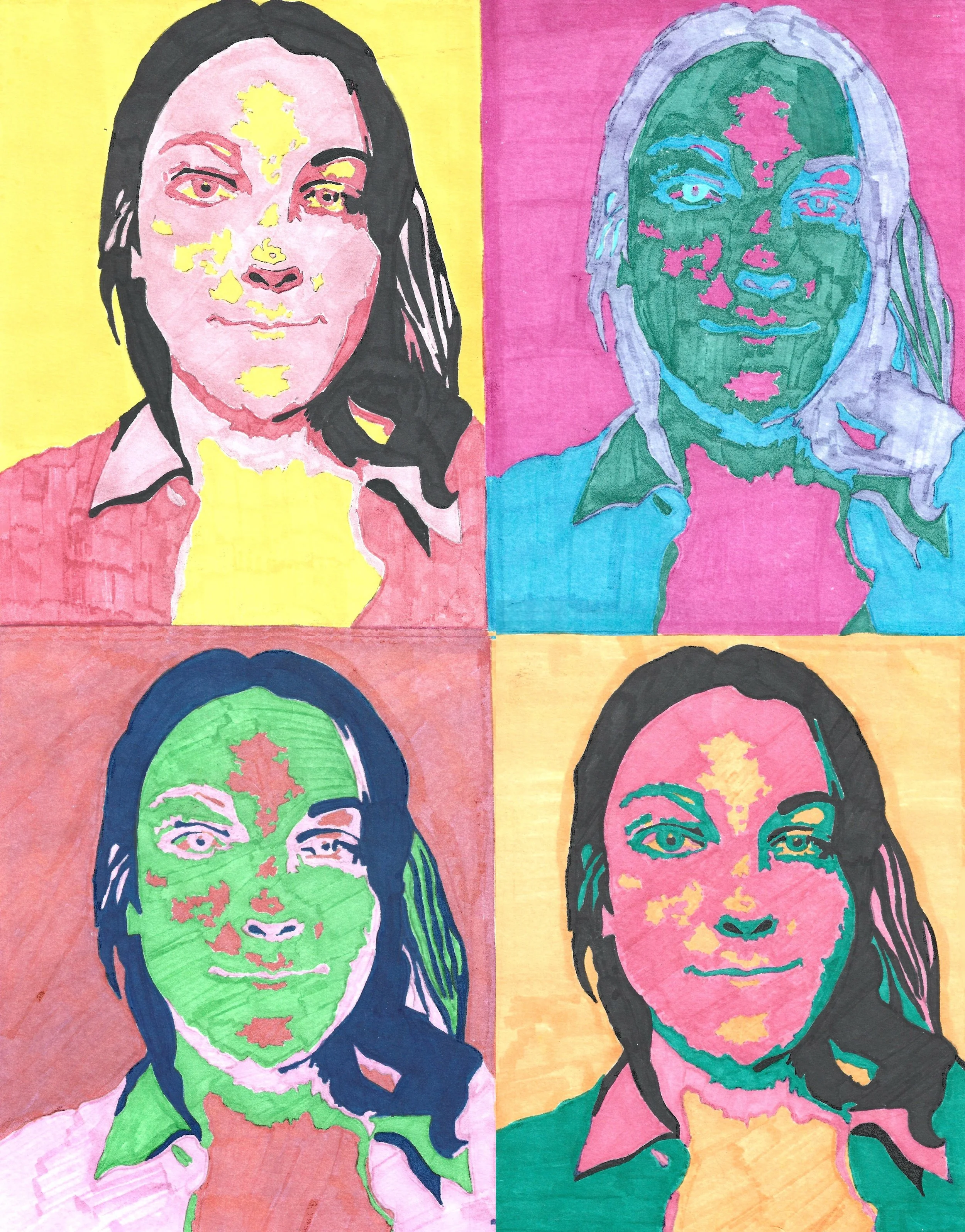
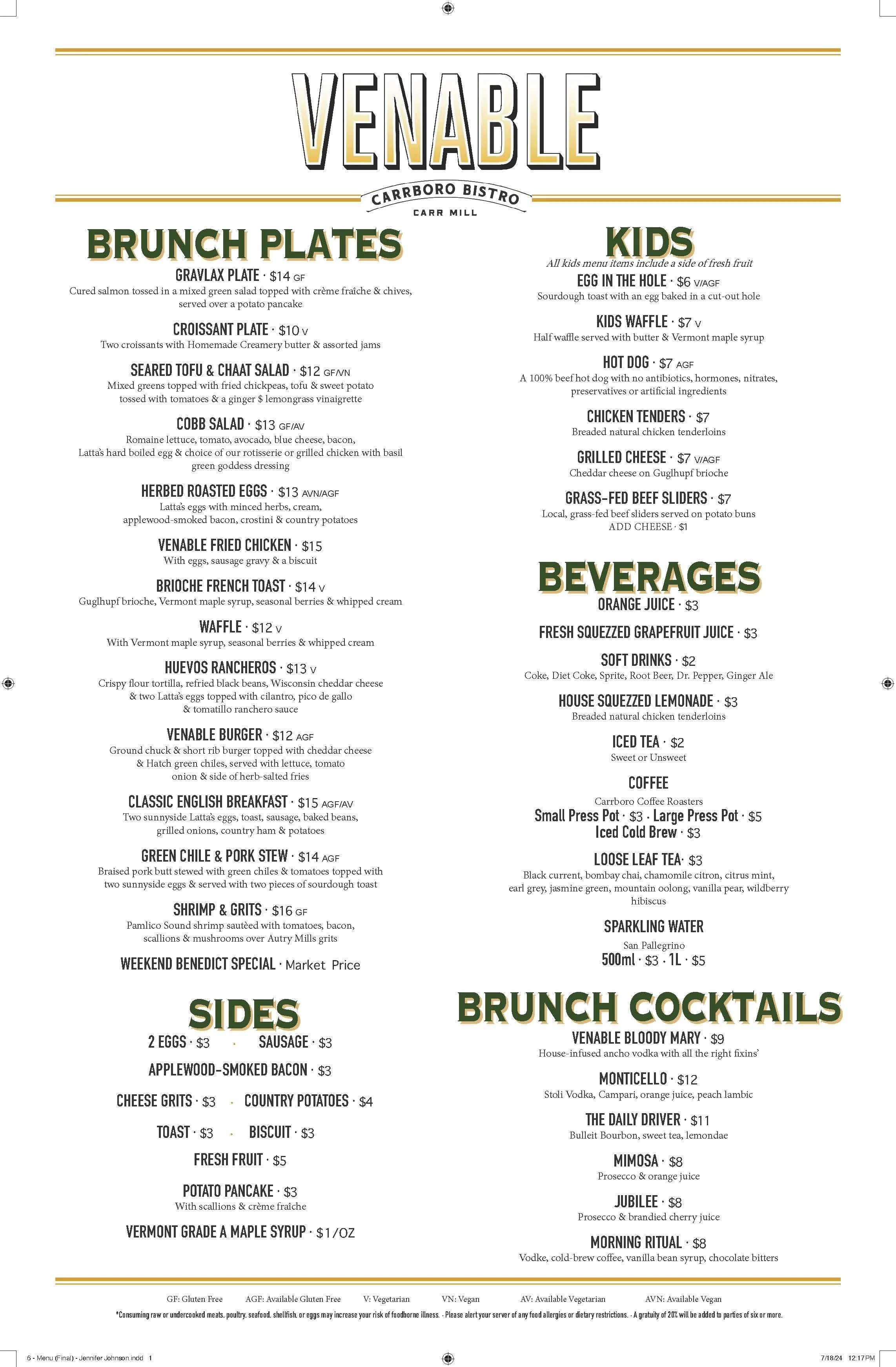
Cane Creek Mountains Poster
Project for Alamance County Parks & Recreation | School Project | Featured in Gift Shop
As part of a design assignment for Alamance County Parks & Rec, we were challenged to create a promotional poster for one of the Haw River parks. Being a frequent visitor to many of the county’s parks already, I decided to choose the one park I hadn’t explored yet, Cane Creek Mountains Natural Area, and let it inspire the design from the ground up.
I took a trip to the park with fresh eyes, looking not just for scenic views, but for the details that made the place special. I noticed textures in the rocks, the layers of trees, buzzing bees around blueberry bushes, and a sunset that wrapped the trails in golden light. I wanted to incorporate all of these elements into a design that would feel like a memory; one that captures the quiet beauty of Cane Creek through both imagery and tone.
After hours of sketching, refining, and pouring intention into every design choice, I submitted my final poster. To my surprise (and total excitement), Alamance County Parks & Rec selected my piece to be featured and sold in their gift shop. Seeing my work publicly displayed like that for the first time was an incredibly validating moment and it reminded me why design rooted in real experience always hits deeper.
Life Sciences Logo Design
First Logo Design | School Project
During school, I had the opportunity to design a logo for our Biology Department as part of a campus-wide competition. The department wanted something that incorporated our school mascot—an otter—alongside visual elements that represented science and technology. The logo also needed to include the text “Life Sciences & Technology” or some variation of the letters and “Bio, Histo, Medical Labs,” which challenged me to balance detailed illustration with clear typography. I created a design that blended the playful spirit of the otter with symbols of science, like pipettes, beakers and lab googles, to represent the department’s focus. My design made it to the final round of selections, and although it wasn’t ultimately chosen, I was proud to be considered among such a talented group of designers and to contribute to a project that celebrated both creativity and science.
Mural Paintings
Finding my love for painting walls
Painting murals has become one of my favorite creative outlets. There’s something incredibly rewarding about working on a large scale—seeing an empty wall slowly come to life with color, texture, and purpose. My first mural was actually a final project while I was in school. It challenged me to think differently about space, movement, and visual storytelling. I had to plan every detail ahead of time, from the sketch to the paint choices, but I also learned to stay flexible and trust the process. That experience helped me fall in love with mural work and the hands-on, immersive nature of it.
More recently, I painted a mural for Seven Ten Distillery—a locally grown, community-focused business. This piece was especially meaningful because it allowed me to combine my passion for art with my appreciation for the stories behind small businesses. The mural was designed to reflect their craft, culture, and connection to the community. I loved every part of the process—from concept to final brushstroke—and it reminded me how impactful art can be when it’s rooted in place and people. Murals let me leave something lasting behind, and I can’t wait to create more.
I then was given the opportunity to help design a set of hand-drawn labels for a line of spirits from Seven Ten Distillery. They wanted something that felt artisanal, approachable, and true to their local roots—so we leaned into a hand-illustrated style that gave each bottle its own personality while keeping a cohesive brand feel. From sketching botanicals to experimenting with lettering, every detail was crafted with care to reflect the small-batch, heartfelt nature of their products. The final designs felt like a perfect blend of storytelling and style, and it was such a rewarding experience to see them come to life, representing a brand that values both quality and creativity.
Phase 5: Starting Freelance
After graduation, I stepped into the freelance world and hit the ground running. I took on a few clients and produced some cool work. It was both exciting and overwhelming, and the best way I could’ve learned what kind of work really lit me up.
My first graphic design gig was for a nonprofit organization that partnered with UNC Chapel Hill to host “Science is Awesome Day,” an event designed to get 4th graders excited about STEM. The program brought students to UNC’s astronomy and physics departments for a day full of hands-on experiments and discovery. I was commissioned to design a t-shirt for the event—something fun, bold, and kid-friendly that captured the spirit of science and exploration, and also included Carolina blue. I sent over a few designs for them to choose from, but ultimately decided on the mockup design presented.
Seeing my design worn by so many excited students was a surreal and rewarding moment, and it showed me just how powerful design can be in shaping memorable experiences.
(Post-Graduation)
Wedding Invitation
Wedding Invitation | Page Layout
One of my favorite projects was designing a custom wedding invitation and RSVP card for a couple getting married at the Grandover Resort. They wanted something elegant and personal, so we landed on a line drawing style that featured the Grandover’s iconic architecture alongside a drawing of the couple sharing a kiss. I digitally illustrated every detail. Each window, line, and curve of the building, by hand, creating a piece that felt both timeless and deeply meaningful. The final design struck the perfect balance between romance and sophistication, and the couple absolutely loved how personal and unique it turned out.
What made this wedding project even more special was the relationship I built with the couple. As I designed their invitation suite, I took time to learn their story. How they met, what brought them together, and the little things that made their love so genuine. We connected on such a deep level that they asked me to officiate their wedding. I was honored and got ordained just for the occasion. Being able to design the invitations and stand beside them on their big day felt incredibly full-circle, like I wasn’t just a designer, but part of their story.
Logo Creations
(Learning the importance of Branding)
When I first started creating logos for people, it was usually because someone reached out saying they needed “a quick logo” for a new business or idea. I was excited to help bring their vision to life, and I’d ask questions, sketch out concepts, and deliver a finished design that captured the vibe they were going for. But over time, I started to notice a pattern—many of these clients hadn’t thought much beyond the logo itself. They didn’t have a clear sense of their brand voice, target audience, or even what they wanted their business to feel like. That’s when I started asking deeper questions and realized that what they actually needed was branding—not just a logo.
Through those early projects, I learned how important it is for a logo to be more than just visually appealing—it has to be rooted in strategy. I started exploring brand identity more seriously, diving into things like typography systems, color theory, tone of voice, and how a brand shows up across different platforms. I realized that a logo is just the tip of the iceberg, and that strong branding is what gives a logo meaning, consistency, and staying power.
Helping people uncover the “why” behind their business and turning that into a visual system became one of my favorite parts of the creative process. It’s more collaborative, more intentional, and way more impactful than just designing a pretty mark. Now, when someone asks for a logo, I get excited to go beyond that—and help them shape a full brand identity that actually works.
Phase 6: Finding My Focus
(Professional Growth & Niche Discovery)
Over time, I found myself naturally gravitating toward projects that blended strategy with creativity—work that didn’t just look good, but felt intentional. I became most excited about design that told a story, captured the heart of a business, and made brands feel truly alive. That clarity led me to hone in on what has become my niche:
→ Branding that reflects a business’s true personality
→ Packaging design that makes products stand out and connect with customers
→ Advertising design that speaks to the right people in the right way
This season of my creative journey has been all about alignment—figuring out what I love, what I’m best at, and how I can use design to help others grow with confidence and purpose. I’ve stepped into a space where strategy and storytelling work hand in hand, and it’s made my creative process feel more grounded and fulfilling than ever.
Now, I’m simply looking for the right clients—people and businesses who are ready for the whole package. The ones who know they’re ready to show up fully and need a creative partner who can bring their vision to life with depth, intention, and heart.
Social Media
After finishing school, I found myself picking up a camera more often—sometimes just to capture moments with friends or document everyday life. What started as a casual interest quickly turned into a creative obsession. I fell in love with the storytelling power of photography and videography—the way a single frame could evoke a feeling or a short video could bring a brand or moment to life. It felt like a natural extension of my design work, but with even more motion, energy, and emotion.
As I got more involved with photography and videography, I naturally found myself stepping into the world of social media marketing. I was creating visual content that wasn’t just meant to live in a portfolio—it was being used on Instagram, TikTok, websites, and digital ads. I started paying close attention to what kinds of visuals performed well, how different types of content connected with different audiences, and how design, photo, and video all work together to build a consistent brand presence online.
What began as just capturing great visuals turned into helping clients shape their entire digital story—from the look and feel of their feed to the messaging behind each post. I began crafting content with purpose, tailoring it for platforms where first impressions matter and attention spans are short. This hands-on experience taught me how powerful well-executed branding and storytelling can be on social media, and how creative strategy can turn casual viewers into loyal customers.
Now, social media marketing has become a natural part of what I offer—blending design, photography, video, and content strategy into cohesive campaigns that help brands show up consistently and connect with the right people in the right way. It’s allowed me to offer more than just visuals—I get to help businesses grow with intention across every platform they show up on.






































